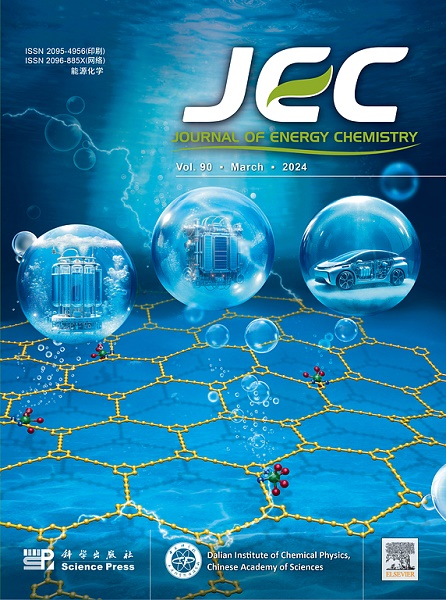Trends and advances in the development of nanodiamond-graphene core-shell materials in heterogeneous catalysis
IF 13.1
1区 化学
Q1 Energy
引用次数: 0
Abstract
Developing innovative catalysts continues to be a pivotal interest within the heterogeneous catalysis area. The carbonaceous material ND@G, featuring a sp2/sp3 hybrid architecture, comprises a nanodiamond (ND) core structure encased within an ultrathin graphitic nanoshell (G), and has been widely exploited as a metal-free catalyst or a support for metal catalyst. Its unique curved zero-dimensional structure/surface and tunable defective surface characteristics endow it with outstanding performance in different heterogeneous catalytic systems. The present review summarized the construction of the diverse types of ND@G and a wide-ranging valorization of structure–activity relation with its catalytic mechanism in various reactions. The recent advancements in the impact of active sites’ architecture and the interaction between metal and support (preventing the as-formed metal species migration and agglomeration based on ND@G) on the catalytic performance of supported metal catalysts are particularly highlighted. The current challenges and outlooks/opportunities confronted by ND@G materials in catalysis are prospected by virtue of its fundamental physicochemical characterizations and potential catalytic estimation. This in-depth analysis seeks to pave the way for effective utilizing the ND@G in catalytic processes. Based on our knowledge, we also identify the challenges along with this area and offer some perspectives on how to overcome them.

纳米金刚石-石墨烯核壳材料在非均相催化中的发展趋势与进展
开发创新催化剂仍然是多相催化领域的关键兴趣。碳质材料ND@G具有sp2/sp3杂化结构,包含包裹在超薄石墨纳米壳(G)内的纳米金刚石(ND)核心结构,已被广泛用作无金属催化剂或金属催化剂的载体。其独特的弯曲零维结构/表面和可调缺陷表面特性使其在不同的多相催化体系中具有优异的性能。本文综述了不同类型ND@G的构建、广泛的构效关系及其在各种反应中的催化机理。特别强调了活性位点结构和金属与载体之间的相互作用(基于ND@G阻止形成的金属物种迁移和团聚)对负载金属催化剂催化性能的影响的最新进展。通过对ND@G材料的基本理化性质和催化潜力的估计,展望了ND@G材料在催化方面面临的挑战和前景/机遇。这一深入的分析旨在为在催化过程中有效利用ND@G铺平道路。根据我们的知识,我们还确定了该领域面临的挑战,并就如何克服这些挑战提供了一些观点。
本文章由计算机程序翻译,如有差异,请以英文原文为准。
求助全文
约1分钟内获得全文
求助全文
来源期刊

Journal of Energy Chemistry
CHEMISTRY, APPLIED-CHEMISTRY, PHYSICAL
CiteScore
19.10
自引率
8.40%
发文量
3631
审稿时长
15 days
期刊介绍:
The Journal of Energy Chemistry, the official publication of Science Press and the Dalian Institute of Chemical Physics, Chinese Academy of Sciences, serves as a platform for reporting creative research and innovative applications in energy chemistry. It mainly reports on creative researches and innovative applications of chemical conversions of fossil energy, carbon dioxide, electrochemical energy and hydrogen energy, as well as the conversions of biomass and solar energy related with chemical issues to promote academic exchanges in the field of energy chemistry and to accelerate the exploration, research and development of energy science and technologies.
This journal focuses on original research papers covering various topics within energy chemistry worldwide, including:
Optimized utilization of fossil energy
Hydrogen energy
Conversion and storage of electrochemical energy
Capture, storage, and chemical conversion of carbon dioxide
Materials and nanotechnologies for energy conversion and storage
Chemistry in biomass conversion
Chemistry in the utilization of solar energy
 求助内容:
求助内容: 应助结果提醒方式:
应助结果提醒方式:


